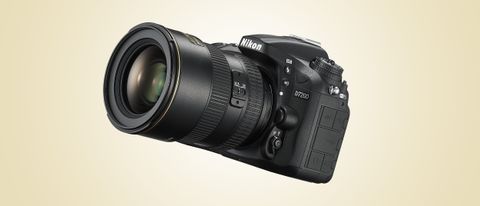Why you can trust TechRadar
Build and handling
- Magnesium alloy used for the majority of the construction
- Design virtually unchanged from the D7100
- Weighs 765g
Nikon has worked hard to make the D7200 look and feel like a high-quality piece of kit, and it shows – the camera feels and handles like a more expensive model, such as the D610 or the D750.
Both the front and rear grip have soft textured coatings to make the camera feel secure and comfortable in your hand. Your middle finger fits neatly underneath the protrusion for the shutter release button and your forefinger and thumb sit naturally on the shutter release and rear scrolling dial respectively – all in all it feels a good camera to hold.
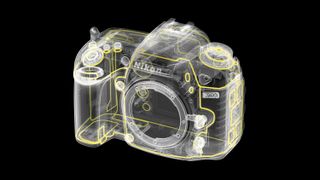
Like the D7100, the D7200 is weatherproofed, enabling you to use it with confidence in a variety of less-than-ideal weather conditions. The weatherproofing adds to the camera's air of high quality and ruggedness, even if it's not quite up to the standard of pro camera like the Nikon D810.
The mode dial is on the top left of the camera and has just nine different options, including two useful slots for custom settings. Before you can move the dial you need to hold down a lock button in its centre, which is useful for avoiding accidental settings changes. Just underneath the mode dial is a second dial for selecting the drive mode. There's a lock button for this to – it's slightly fiddlier than the one on the mode dial, but it's unlikely you'll be needing to use it as often.

The D7200 is the type of camera that needs to be used with both hands, but all of the buttons are close to the edges and within easy reach of your thumbs. While the majority of the buttons are on the back of the camera, there are some useful ones elsewhere. As on the D7100 and D7000, the AF selection button and AF/M switch are just behind the lens mount, and easily reached with your thumb without you having to move your eye away from the viewfinder.
Below the lens mount is a customisable function button which can be assigned to one of 18 different functions. One which I found particularly useful is the Virtual Horizon Display in the viewfinder function – if you switch this on, bars will appear in the viewfinder to help you accurately level the camera.
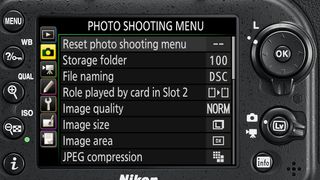
If you've used a Nikon DSLR before you should be familiar with the rest of the controls, and also with the menu system, which is sensibly arranged on the whole.
In the bottom left-hand corner on the back of the camera is a button marked with an "i", which acts as a quick menu button. Press this and you'll be able to change settings such as Image Area (you can choose between DX and 1.3x crop mode), Picture Control and the ability to assign certain functions to certain buttons. I would normally expect to find more functions in this menu, but most of the settings you're likely to want to change frequently (such as ISO, metering, or white balance) have their own separate buttons anyway.
The optical viewfinder is bright and clear and it's excellent to see a camera at this level offering 100% coverage, so you can be confident that nothing will have crept into the edges of the frame when you check your images later. On the downside, using an optical finder means you can't see the effect that changing a particular setting will have, but that's a characteristic of DSLR cameras, and one advantage of the electronic viewfinders in compact system cameras.
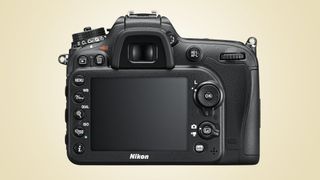
Despite the clarity of the viewfinder, it's still advisable to use Live View when shooting subjects that require precise focusing, such as a still life or macro. Live view focusing is slower because it relies on contrast AF, but because it uses the image formed on the sensor to check the sharpness, it's always accurate. An articulating, or even just a tilting screen would have been nice to see, but Nikon has decided on a fixed monitor in keeping with the rest of the D7000-series cameras so far.
As with the D7100, the Live View button is found on the right hand side of the back of the camera, and around it there's a switch for moving between stills and video shooting.
Connecting the camera to your smartphone or tablet via Wi-Fi is easy once you know how. The control is hidden away a little inside the menu settings, though – I'd prefer to see a dedicated button, or at least to have the option included in the "i" menu. Instead, you need to scroll to the third page of the Setup Menu in the Main Menu, then choose Enable under the Wi-Fi option. There are disappointingly few controls available from within the remote app – you can only move the focus point and trip the shutter release – but it's handy for group shots, tripod use (to avoid jogging the camera) and shooting hazardous or timid subjects remotely. Perhaps more useful is the facility to transfer images from the camera to your phone, enabling you to share them quickly via email and social media.
Autofocus
- 51-point AF, 15 cross-type AF points
- 51 or 11 focus points can be selected
- 9-, 21-, or 51-point Dynamic-area AF
In what was a first for a Nikon DX format (APS-C) camera a couple of years ago, the D7200 is capable of focusing at down to -3EV, which is thanks to the improved MultiCAM 3500 II 51-point autofocusing system - a proven AF system that's be inherited from full-frame models higher up the Nikon range.
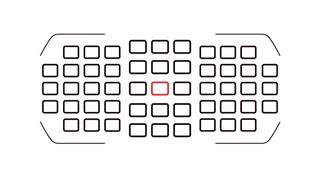
The autofocus module has 15 cross-type sensors, and one central sensor which is sensitive down to an f/8. This makes the autofocus system usable with telephoto lenses and teleconverter combinations where the maximum available aperture is f/8 - quite a reality when you consider some of the newer superzoom lenses.
The D7200 delivers quick and snappy focus when set in Single AF mode, while you won't be disappointed by the D7200 performance when it comes to subject tracking.
The D7200 uses what is getting on to be a rather dated 2016-pixel metering sensor to analyse the scene and understand what part of the frame its supposed to be tracking, but it still does a very solid job.
Current page: Build, handling and AF
Prev Page Introduction and key features Next Page Performance and image qualityAmy has been writing about cameras, photography and associated tech since 2009. Amy was once part of the photography testing team for Future Publishing working across TechRadar, Digital Camera, PhotoPlus, N Photo and Photography Week. For her photography, she has won awards and has been exhibited. She often partakes in unusual projects - including one intense year where she used a different camera every single day. Amy is currently the Features Editor at Amateur Photographer magazine, and in her increasingly little spare time works across a number of high-profile publications including Wired, Stuff, Digital Camera World, Expert Reviews, and just a little off-tangent, PetsRadar.
